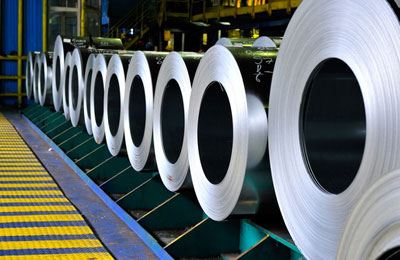
Saudi non-oil GDP growth seen easing to 6pc
Kuwait, July 30, 2013
Saudi Arabia’s non-oil GDP growth, which achieved break-neck rates of eight per cent per year between 2005 and 2012, is expected to moderate to six per cent during 2013, a report said.
The Saudi economy has grown at a much higher rate than previously thought and has therefore revised its forecasts for the country’s non-oil GDP growth for 2013 and 2014 from five per cent per year to six per cent (from 7.1 per cent in 2012), added the latest GCC Brief released by the National Bank of Kuwait (NBK).
This growth will be driven by investment in housing and industry, alongside employment gains that benefit consumers, the report says.
Real non-oil GDP growth averaged eight per cent per year between 2005 and 2012, compared to the five per cent (2005-2011) reported earlier, NBK states. Growth was driven by across-the-board strength in the industrial and service sectors, with the private sector (nine per cent per year) leading the way.
According to the NBK, oil sector GDP is likely to be weaker than previously thought this year, with real oil GDP expected to fall five per cent, thus reducing GDP growth overall by one per cent.
This is due to the fact that Saudi Arabia’s oil output fell sharply by 0.7 million barrels per day (mbpd) to 9.3 mbpd in the 10 months to April 2013, as the kingdom sought to support oil prices at close to $100. After this year’s sizeable decline, the NBK expects Saudi oil output to be broadly flat in 2014, rather than the small cut seen previously.
Some indicators show that the pace of private non-oil activity may have eased a touch, the bank says, adding that the slowdown may be linked to apparent delays in project execution in 2H12, as well as slightly tighter project financing conditions. An easing of these problems, coupled with policy initiatives that support consumers (for example, the mortgage law, and nitaqat employment regulations) and continued fiscal stimulus will sustain growth going forward, according to the NBK.
The budget surplus rose to 13.7 per cent of GDP in 2012 on rising oil revenues and a modest six per cent increase in government spending (following a much larger increase in 2011).
“Although the fiscal position should remain robust near term, we think that the government may look to moderate spending growth in future with an eye on longer term fiscal sustainability. This could translate into a further modest six per cent per year increase in spending in 2013 and 2014 – though still enough to finance notable hikes in capital spending. As oil revenues dip, the budget surplus could slip towards five per cent of GDP over the next two years,” the bank says.
According to the NBK, inflation has accelerated somewhat, but remained at a moderate four per cent in April 2013. Much of the pick-up was driven by the food price component of the CPI (consumer price index). But given stable international food prices, this rise in domestic food prices may not have much further to run.
Strong economic growth and wage pressures for nationals could invite a further rise in inflationary pressures, the bank says. However, these forces will be offset by a drop in food price inflation and the impact of a stronger US dollar in checking import prices. Inflation is forecast to average four per cent in 2013 and 2014, the bank concludes. – TradeArabia News Service







